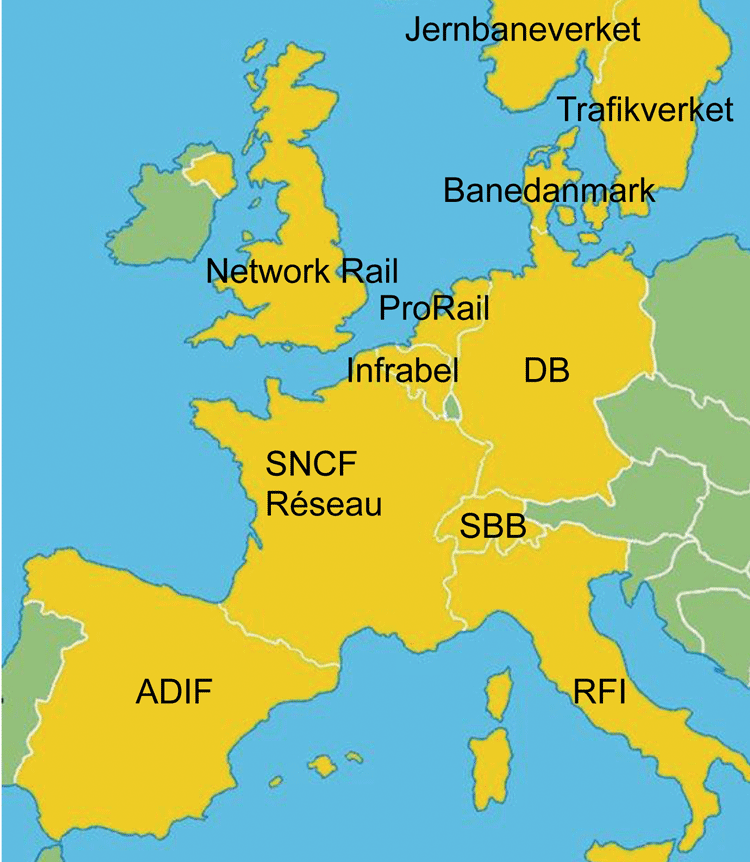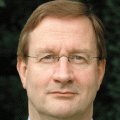20 years of working together in rail: The EEIG ERTMS Users Group
Posted: 26 July 2015 | Michel Ruesen | No comments yet
As the EEIG ERTMS Users Group marks its 20th anniversary this year, Managing Director Michel Ruesen gives an overview of how it has evolved over the years, the important role it currently plays in the industry, and how it hopes to continue helping during the years of growth that ERTMS has ahead.


Not only has European Railway Review recently celebrated its 20th anniversary (in 2014), now is the turn of EEIG ERTMS Users Group (EUG) this year. This European Economic Interest Grouping was founded on the 1 August 1995 by DB, FS and SNCF with the aim to demonstrate the concept of ERTMS as an interoperable railway train/safety control system by a number of pilot projects. Renfe (now ADIF), NS (now ProRail) and Railtrack (now Network Rail) joined shortly thereafter to carry out a total of seven ERTMS pilot projects and to share expertise. When these projects were finalised in 2005, the members of the EUG decided to maintain the EEIG and to change its objective into ‘(technical) support to the railways in the implementation and further development of ERTMS in Europe and the administration of EU funding in the field of TEN-T/ERTMS’. Banverket (now Trafikverket), SBB, Banedanmark, Jernbaneverket and Infrabel joined the EUG after 2005. Today the EUG consists of 11 members who each have more than €250 million of ERTMS investments in their infrastructure. In order to take the interest of train operators and fleet owners sufficiently into account, an RU ERTMS/ETCS platform was set up in 2013 with the aim to discuss the relevant and practical issues concerning the implementation of ERTMS on-board trains. ATOC, CER, DB Fernverkehr, DB Schenker, EPTTOLA, ERFA, EUG, MRCE, NMBS/SNCB, NS, ÖBB, SBB, SNCF and Trenitalia participate in this platform, as well as the Rhine Alpine Corridor (Rail Freight Corridor 1).
An important role of the EUG is to consolidate the views of the technical experts of the railways in the field of ETCS and to advise the official representative railway organisations CER, EIM, EPTTOLA and ERFA in the ERA Change Control Management process. As such, EUG is the counterpart of UNISIG, which has a similar role for the suppliers of ETCS equipment. In practice, ERA, EUG and UNISIG work together to improve the specifications of ETCS as part of the TSI for Control and Command Systems. In the same way UIC, the partner of EUG in this field of ERTMS, works together with ERA and the GSM-R Industry Group to improve the GSM-R specifications.


Members of the ERTMS Users Group. Source: ERTMS Users Group / Co-Financed
by the European Union Trans-European
Transport Network (TEN-T)
Another field of attention for the EUG is the validation and authorisation of ERTMS. EUG facilitates ERA and laboratories in the development and improvement of the test specifications for ETCS by providing tools and prototypes. Tests which were used to check the compatibility between ERTMS trains and tracks have been collected and structured by using a standard format. The aim of this work is to reduce the time and costs for authorisation of ERTMS equipped trains on the European network.
The EUG also advises the core network corridor organisations (in particular the Rhine Alpine Corridor, the North Sea – Mediterranean Corridor and the Mediterranean Corridor) in the deployment of ERTMS and participates in the meetings of the ERTMS working groups of these organisations with the aim to develop a coherent network of ERTMS corridors. For this reason, EUG also participates in the meetings of the Corridor Group, organised by the European Coordinator for ERTMS.
Finally, the EUG also offers its members the possibility to develop competences in the field of ETCS. First of all, the EUG acts as a knowledge centre: all documents produced by the EUG in the past 20 years are available and accessible. Secondly, the EUG offers its members the possibility to develop talented engineers in the field of ERTMS by enabling three to four years assignments as Lead Engineer in the EUG office in Brussels. And recently, the EUG started to provide advanced ERTMS training courses for professionals in ERTMS projects, complementary to the ERTMS introductory course organised by UIC.
Most of the work of the EUG is in support of the Memoranda of Understanding which have been signed between the European Commission and the European Railway Associations (both railways and manufacturers) in 2005, 2008 and 2012. This work is therefore also co-financed by the European Union in the frame of the TEN-T regulations. The EUG participates in the meetings of the ERTMS Steering Committee organised by European Coordinator for ERTMS and acts as coordinator for the TEN-T projects in which the European Railway Associations cooperate to achieve the aims of the Memoranda of Understanding and the related ‘Breakthrough Programme’ of the European Coordinator.
EUG’s focus
The focus of the EUG is on solving the issues which are relevant at this moment. Nevertheless, it is recognised that attention should also be given to future developments in order to avoid obsolescence of recent investments in ERTMS. The concept of backwards compatibility (i.e. future generations of trains must be able to run on today’s ERTMS tracks) is of paramount importance. On the other hand, ERTMS specifications shall be able to deal with future obsolescence of products and incorporate future new technologies and corresponding new user requirements. The EUG therefore participates in the Research and Development projects related to ERTMS, such as Next Generation Train Control (a Framework Programme 7 project of DG Research). And the members of the EUG who are also members in the Shift2Rail Joint Technology Initiative have agreed to work together in the ETCS related part of this initiative under the umbrella of the EUG.
Specific topics which are presently dealt with by the experts of the EUG include:
- ETCS over GPRS: the use of packet switching technology for the communication between train and track, to increase the capacity of the GSM-R radio link (presently only circuit-switched technology is used, i.e. one train per frequency channel at any location)
- Automatic Train Operation to reduce energy consumption, synchronise train speeds to increase capacity and to automatically position trains at the desired locations
- On-line key management to increase the security of the radio link without the need to bring the train to a maintenance workshop
- Train Track System Validation to improve the authorisation process of the ERTMS part of trains for ERTMS tracks/networks
- Formulation of functional requirements for the next generation train control system (for both main line and urban rail systems).
Twenty years have passed. The EUG has matured into a competence centre in the field of ERTMS – especially the ETCS part. The deployment of ERTMS in Europe is leaving the pioneering phase and entering a period of rapid growth. Much work needs to be done in the coming years; the EUG will be there to help the railways with the implementation of ERTMS and the protection of their investments.










